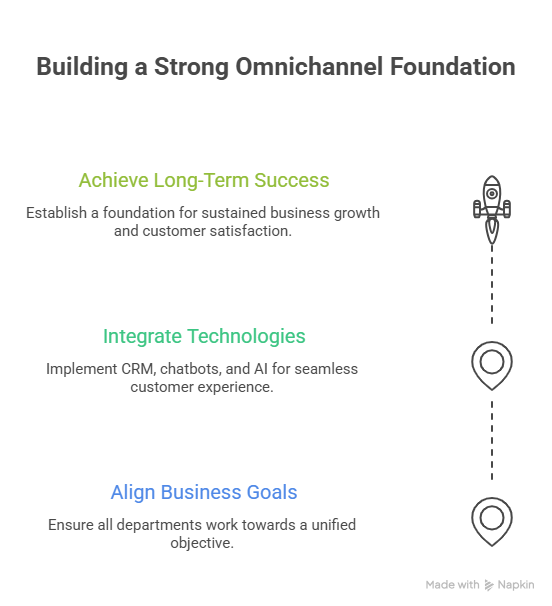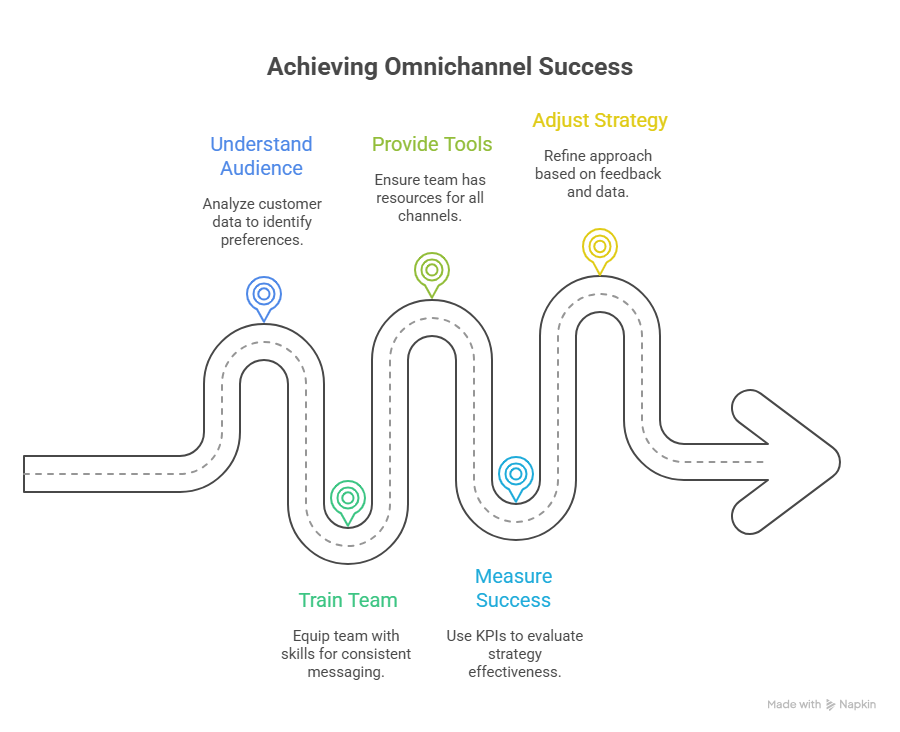Guide to a Successful Omnichannel Customer Experience
22 May 2024 By: Mary Dellosa
Updated

I’ve always been amazed by how quickly people switch between devices and platforms these days. One moment they are chatting online, the next they are in a store checking out the same product. To keep up, your business has to move with them. I have seen how a well-connected system can turn a complicated process into something simple. This guide will talk about creating that kind of omnichannel customer experience. One that feels effortless from start to finish.
What is Omnichannel Customer Experience?
Before we get into the steps, let’s talk about what omnichannel customer experience really means. It is about making sure people get the same kind of care no matter where they reach you. Through a website, app, store, or even a quick message on social media. It is giving them one connected experience that feels personal and easy.
Defining Omnichannel Customer Experience
Omnichannel customer experience means every part of your business is connected. Like a customer adding shoes to their online cart, then walking into your store to try them on. If your system remembers their choices, that is omnichannel done right.
It is making sure those ways feel like one. Whether someone chats with you online, visits in person, or reaches out through social media. They should feel like they are talking to the same brand every time.
The Importance of Omnichannel Strategy
A real omnichannel customer experience strategy is essential. Customers today expect things to be simple. They want to start shopping online and finish in-store without hassle.
It also helps you get to know your customers better. Every click, message, and visit tells you something about what they like. When you use that information to personalize their experience, they feel understood, and that builds trust.
Most of all, it sets your business apart. People remember the brands that make life easier for them. When every interaction feels connected, customers tend to come back.
An omnichannel strategy is really about care. It is how you show customers you are paying attention.
Building a Strong Omnichannel Foundation
Once you understand what omnichannel customer experience means, the next step is to build your foundation. This means setting clear goals and using the right tools to make everything work together.
When you look at your customer’s journey from start to finish, you can see what needs to align. Building this foundation helps your business grow stronger and stay ahead.

Aligning Your Business Goals
The first thing to do is make sure everyone in your company is working toward the same goal. Marketing, sales, and customer service should all be moving in one direction.
When teams work together, your brand feels more unified. Customers stop seeing separate departments and start seeing one consistent experience.
Integrating Technology for Seamless Experience
The right technology can make or break your strategy. A CRM helps you keep track of every customer. Data tools show you what people respond to. Chatbots and automation can make responses faster while keeping them personal.
When these tools fit together, your business runs smoothly and your customers feel that ease every time they interact with you.
Designing the Omnichannel Customer Journey
Now that your foundation is set, it is time to look at the customer journey. This is where you map out every interaction. The goal is to make sure each touchpoint feels connected and consistent.
Mapping the Customer Journey
Start by putting yourself in your customer’s shoes. Think about how they first discover you, what makes them decide to buy, and what happens afterward.
When you understand what customers experience in each step, it is easier to fix what’s confusing and improve what’s working. Every small detail counts when you are building trust.
Identifying Key Touchpoints
Every place your customers meet your brand is a touchpoint. From your website, social media pages, physical store, up to the support line. Each one shapes how they see you.
Maintain the same message, tone, and visuals across all channels with the help of the best customer messaging platform. When people feel that familiarity, they feel safe choosing you again.
Implementing Your Omnichannel Strategy
Once you have your plan in place, it is time to bring it to life. That means training your team and adjusting as you go.

Training Your Team for Omnichannel Success
Your team plays the biggest role in making this work. Train them well so they can handle every channel with confidence. Give them the right tools and let them see how their work connects to the whole picture.
When everyone understands the goal, customers feel it too. The experience becomes smoother and more natural. This helps them provide the best customer experience.
Measuring and Adjusting Your Strategy
Once you are up and running, take time to measure your progress. Look at KPIs like customer satisfaction, conversions, and feedback.
Use what you learn to improve. Omnichannel is not something you set once and forget. It is something you grow with as your customers and their habits change.
Overcoming Challenges in Omnichannel Customer Experience
Creating an omnichannel customer experience sounds simple, but it comes with challenges. The biggest ones are protecting customer data and keeping the experience consistent everywhere.
To build trust, you need to show customers their information is safe. Use secure systems, follow privacy rules, and always be transparent about how data is used.
Consistency also takes effort. Every channel should reflect the same brand voice and service quality. Train your team to deliver the same standard no matter where they interact with customers.
Omnichannel customer experience success is about steady improvement and genuine care.
Trending now
Omnichannel customer experience is about connecting every communication channel. This way, customers enjoy a smooth, familiar journey. When done right, it builds loyalty, reduces frustration, and strengthens relationships. Businesses benefit from higher sales, better insights, and happier customers.
It all starts with understanding how people move between your touchpoints and making sure the journey feels effortless.
Frequently Asked Questions
Conclusion
When I look at how much smoother customer interactions have become through omnichannel, I realize it is really about people more than platforms. It is about showing up where they are and making things simple.
If you want to see how this works in real life, HelpSquad BPO can help. Our bilingual virtual receptionists are available 24/7, combining human support with helpful automation. Starting at $8.50 per hour, they keep your communication smooth and personal across every channel.
I have seen how the right support team can completely change how customers feel about a brand. If you want to make that change, try HelpSquad today and experience how effortless omnichannel can be.


